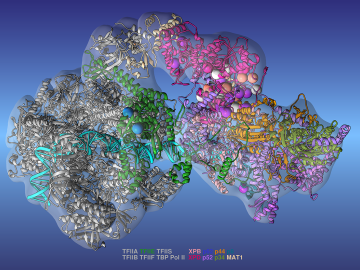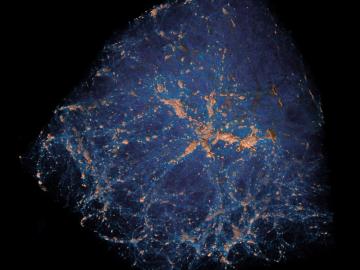
Filter News
Area of Research
- (-) Energy Science (83)
- (-) Neutron Science (28)
- (-) Supercomputing (78)
- Advanced Manufacturing (1)
- Biology and Environment (65)
- Biology and Soft Matter (1)
- Computational Biology (1)
- Computational Engineering (2)
- Computer Science (3)
- Electricity and Smart Grid (3)
- Energy Frontier Research Centers (1)
- Functional Materials for Energy (1)
- Fusion and Fission (11)
- Fusion Energy (8)
- Isotopes (2)
- Materials (81)
- Materials for Computing (9)
- Mathematics (1)
- National Security (23)
- Nuclear Science and Technology (13)
- Nuclear Systems Modeling, Simulation and Validation (1)
- Quantum information Science (2)
- Sensors and Controls (2)
News Topics
- (-) Advanced Reactors (7)
- (-) Grid (41)
- (-) Mercury (3)
- (-) Nanotechnology (23)
- (-) Physics (17)
- (-) Security (11)
- (-) Summit (44)
- 3-D Printing/Advanced Manufacturing (84)
- Artificial Intelligence (45)
- Big Data (28)
- Bioenergy (34)
- Biology (24)
- Biomedical (33)
- Biotechnology (6)
- Buildings (39)
- Chemical Sciences (18)
- Clean Water (10)
- Composites (18)
- Computer Science (110)
- Coronavirus (30)
- Critical Materials (12)
- Cybersecurity (15)
- Energy Storage (77)
- Environment (74)
- Exascale Computing (27)
- Fossil Energy (3)
- Frontier (33)
- Fusion (3)
- High-Performance Computing (45)
- Hydropower (3)
- Isotopes (2)
- Machine Learning (22)
- Materials (56)
- Materials Science (57)
- Mathematics (4)
- Microelectronics (1)
- Microscopy (15)
- Molten Salt (1)
- National Security (11)
- Neutron Science (123)
- Nuclear Energy (13)
- Partnerships (12)
- Polymers (14)
- Quantum Computing (20)
- Quantum Science (31)
- Simulation (18)
- Software (1)
- Space Exploration (8)
- Statistics (1)
- Transportation (71)
Media Contacts

Sometimes solutions to the biggest problems can be found in the smallest details. The work of biochemist Alex Johs at Oak Ridge National Laboratory bears this out, as he focuses on understanding protein structures and molecular interactions to resolve complex global problems like the spread of mercury pollution in waterways and the food supply.

Scientists have discovered a way to alter heat transport in thermoelectric materials, a finding that may ultimately improve energy efficiency as the materials

An ORNL-led team's observation of certain crystalline ice phases challenges accepted theories about super-cooled water and non-crystalline ice. Their findings, reported in the journal Nature, will also lead to better understanding of ice and its various phases found on other planets, moons and elsewhere in space.

Environmental conditions, lifestyle choices, chemical exposure, and foodborne and airborne pathogens are among the external factors that can cause disease. In contrast, internal genetic factors can be responsible for the onset and progression of diseases ranging from degenerative neurological disorders to some cancers.

Using Summit, the world’s most powerful supercomputer housed at Oak Ridge National Laboratory, a team led by Argonne National Laboratory ran three of the largest cosmological simulations known to date.

In a step toward advancing small modular nuclear reactor designs, scientists at Oak Ridge National Laboratory have run reactor simulations on ORNL supercomputer Summit with greater-than-expected computational efficiency.

Scientists at Oak Ridge National Laboratory have developed a low-cost, printed, flexible sensor that can wrap around power cables to precisely monitor electrical loads from household appliances to support grid operations.

OAK RIDGE, Tenn., March 11, 2019—An international collaboration including scientists at the Department of Energy’s Oak Ridge National Laboratory solved a 50-year-old puzzle that explains why beta decays of atomic nuclei
OAK RIDGE, Tenn., Feb. 12, 2019—A team of researchers from the Department of Energy’s Oak Ridge and Los Alamos National Laboratories has partnered with EPB, a Chattanooga utility and telecommunications company, to demonstrate the effectiveness of metro-scale quantum key distribution (QKD).

A team of scientists has for the first time measured the elusive weak interaction between protons and neutrons in the nucleus of an atom. They had chosen the simplest nucleus consisting of one neutron and one proton for the study.


